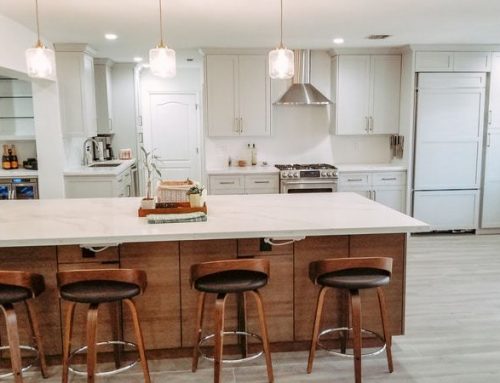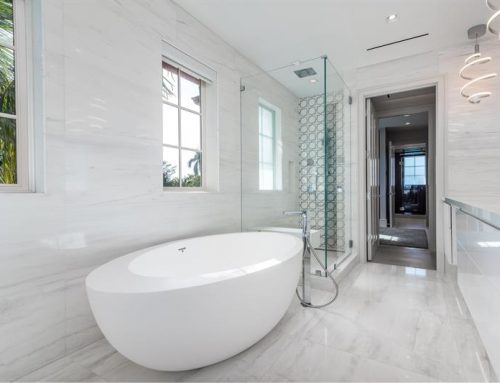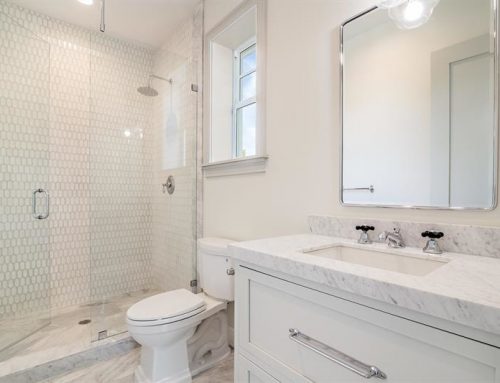Remodeling your home is a big investment that takes a lot of planning. You need to design the project, price out materials, get bids on labor, and then figure out what budget you are actually comfortable with before you even begin. In an ideal world, your project will run smoothly and finish on time, under budget. However, we all know that this is a very rare scenario. There are many additional costs that you may not factor into your original plan. These are the top 5 potential costs hiding in your walls.
1) WATER DAMAGE
There are many potential sources of water damage. From roof leaks, to plumbing issues, and condensation within an HVAC system, you often don’t realize you have a problem until the damage is already done. Water damage often leads to wood rot and mold. This means extra demo costs, labor and material to replace damaged wood, and in the case of mold, a costly remediation. A slow leak that has gone undetected for a long time is a perfect environment for mold to grow, both on wood and drywall. Since mold can be so harmful to your health, the area needs to be sealed off, the materials need to be disposed of properly and the air needs to be scrubbed. This process can cost thousands of dollars.
2) INSECT DESTRUCTION
Although there are several types of insects that cause damage, like carpenter ants and honeybees, termites are by far the biggest offender. They are responsible for $5 billion dollars in property damage a year. They can eat right through wood and the channels they create can weaken the structural integrity of your home. Near windows and doors, you can look for wings and feces as signs of an infestation. However, often, you won’t even see the clues. Consistent termite treatment may have killed any action infestations but that still doesn’t give an indication of the damage they may have caused in the past. A good inspector will alert you to an issue if you are just buying the home, but this is not something a contractor looks for when writing an estimate.
3) CONTAMINANTS
The largest contributors in this category are lead, radon, and asbestos. If your home was built before 1978, lead paint is a potential concern. Lead abatement permanently eliminates lead-based paint hazards. It can involve specialized techniques not typical of most residential contractors. Exposure to high levels of lead can cause anemia, weakness, kidney and brain damage, and reproductive issues. If you have any suspicion a home you are buying may have lead paint, definitely pay for the testing while you are in the inspection period. If you just sign a waiver and then wait until you are doing a remodel later down the road, it can be costly to your health and your pockets. Radon is a radioactive gas that cannot be seen or smelled. It is the number one cause of lung cancer among non-smokers. Radon can be found in the dirt and rocks beneath a home, in well water, and even in some building materials. It can enter through crawlspaces and cracks in the foundation. There are passive tests a homeowner can do by placing a sample media in a specific location for a set amount of time. The media is then sealed and sent away to a lab for testing. The other method is to use an active monitor that you plug in for an instantaneous reading. If your air reading is low then it’s typically not necessary to test the water as well. However, if the air level is high, you should test the water too. Remediation involves sealing any cracks, holes, or potential entry points in the foundation. Water is treated with a point of entry device (wherever water first enters the home). Asbestos is a group of six minerals made up of heat resistant fibers that occur naturally in soil and rock. It is most likely to be found in the insulation in your walls and attic, in old vinyl flooring and adhesives, roofing and siding shingles, and textured paint and patching compounds (like old popcorn ceilings). Testing of suspected materials can cost anywhere from $500-$1500. The average cost to remove asbestos is $2000 when it is found in a limited area. However, if you need a whole house remediation for asbestos contamination the costs can sky-rocket to tens of thousands of dollars. This work must be done by a specialized, environmentally certified crew and be disposed of properly. As with mold remediation, the area needs to be properly sealed and negative air fans circulated so the asbestos particles are not released into the air. Asbestos can cause mesothelioma and certain cancers. You can see that these contaminants can cause serious issues and it is one area that, if detected during your remodel, you cannot cut costs.
4) OLD WORK, NEW LAWS
The older your home is, the more likely you are to find something that just doesn’t look quite right. Work that may require a permit today, didn’t necessarily require it years ago. Your home may have been owned by a “do it yourselfer” or a previous owner “knew a guy” who could do the work. If this work doesn’t conform to current laws, it could have to be redone, even if it isn’t directly involved with your remodel. This could be questionable wiring found within walls, outdoor rooms converted to indoor space without proper structure, insulation, or HVAC considerations, laundry rooms without proper dryer ventilation, and the list goes on. If you can spot anything that doesn’t look like it was part of the original floorplan or may have been done by an unlicensed handyman, definitely have an inspector or licensed contractor take a closer look at it so it doesn’t cost you more later on. Based on the work you are doing, there are specific things you will need to bring up to code. For example, you may only be remodeling a kitchen but if you are doing any electrical work, the city may require you to also update (and possibly add to) all the smoke detectors in your home. If you are doing a bathroom remodel and polybutylene pipes are discovered, you may need to replace them all with copper or PVC piping as the previous is prone to failures and can cause leaks. Do you want to add an addition or pool? You may need extra foundation support. The standard depth for these pilings are “up to 20” feet in a typical contract. However, if you live near water or in state like Florida with much water underground, you may need to go much deeper which can increase the costs by tens of thousands of dollars. Most expensively, many places also require the whole home to be brought up to code if the renovation exceeds a certain square footage of the home or certain percent of the value of the home, often 50%. This can get most expensive in areas prone to natural disaster, where hurricane and earthquake codes have changed a lot to ensure the integrity of the home and also where flooding is a major concern. For example, a home on the water in Florida built 50-60 years ago but being remodeled today for more than 50% its current value, would likely need to be completely rewired, replumbed, new windows, new roof and ties, AND all this done after the whole home must be raised an additional 6 feet from its current location. At this point, you are better off demolishing the home and doing a new build if you can afford it. It is very important that you make sure your contractor knows the current codes and limitations for your specific area. Your scope of work may not even be feasible, or you may end up far exceeding your budget.
5) STRUCTURAL CHANGES
The final hidden cost on the list is structural changes. Many contractors are able to determine which walls are structural and which are not. However, without original plans, it can be a guestimate. If you are trying to open up your living space, it is fairly simple to remove non-load bearing walls. You may need to relocate some things but the cost is relatively low for the value you are adding to your living space. However, if the wall is structural or load-bearing, it can get quite expensive. A structural wall is supporting the weight of the roof. If the wall isn’t too large, you may be able to re-support the area with wood beams. If the new opening is expansive though, you will likely need steel beams to support the structure. This greatly increases both material and labor costs. In addition, steel is heavy so you may now need to add additional supports to your foundation as well. This requires the work of an architect and engineer. Additional piles can cost thousands of dollars. Even in a best case scenario where the wall is non-structural, you can discover things within the wall, like a vent stack, or waste line, air conditioner drain lines, a gas line etc that can be costly to re-route. When original home plans are available, I would always recommend sharing them with your contractor so that he can account for some of these costs ahead of time. Be wary of a contractor who simply looks around, listens to your desired scope of work and issues you a price. His or her low price might seem enticing but this is how you often run into change orders and quickly escalating costs. There is much value in the contractor who takes time to thoroughly evaluate your project and have his trades put a second set of eyes on the scope to make sure all aspects of the project are included and the potential of hidden costs is minimized.
It is clear to see that these potential issues can have a huge impact on the overall cost of your renovation and the amount of time needed to complete your project. Selecting the right contractor can help you minimize these surprises to your budget by recognizing potential issues prior to demo and educating you on what to expect. It is always a good idea to have a 10% contingency in your budget to cover the unexpected items that may come up. While it’s unfortunate that you could end up spending tens of thousands of additional dollars for things you’ll never see, your health and safety are very important and these items should always be taken seriously.







Leave A Comment